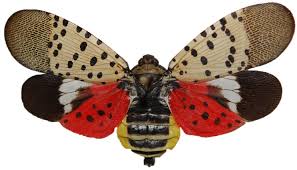Insect Management Program
Mosquito-Borne Disease Control
Spotted Lanternfly Control
Tick Surveillance
Kyle Schutt
Insect Management Technician
570-622-3742, ext. 5
This email address is being protected from spambots. You need JavaScript enabled to view it.
Mosquito-Borne Disease Control Program
The Schuylkill Conservation District is participating in the Mosquito-borne Disease Control Program, run by PA Department of Environmental Protection. The program's surveillance and control activities run from April to September. This program aims to reduce the risk of West Nile Virus (WNV) by implementing an Integrated Mosquito Management (IMM) strategy. This IMM strategy includes public education, surveillance, mosquito habitat reduction, natural controls, and treatment of both larval and adult mosquitoes.
What You Can Do
The best way to help prevent the spread of mosquito-borne disease is to eliminate standing water around your house or yard. Household items such as buckets, toys, tarps, tires, pots, and items as small as bottle caps can hold enough water to breed mosquitoes. By removing these items from around your house or yard, you are eliminating the areas where mosquitoes can breed. Cleaning the water in your birdbaths and wading pools on a weekly basis can break the mosquito breeding cycle and help protect your family. Following these simple steps can help reduce the number of mosquitoes in your backyard.
A Guide to Homeowner Mosquito Control
A Biological Introduction to "The Asian Tiger Mosquito"
PA DEP West Nile Virus Control Program
Centers for Disease Control and Prevention - West Nile Virus
Centers for Disease Control and Prevention - Zika Virus

Spotted Lanternfly Control Pilot Program
The Schuylkill Conservation District is also participating in the Spotted Lanternfly Control Pilot Program in conjunction with the PA Department of Agriculture. This program aims to educate the public and assist in control efforts to eradicate this pest. The spotted lanternfly has the potential to greatly impact local grape, hops, and logging industries. Please use the link below to report a spotted lanternfly sighting. Understanding how this pest is moving is vital to controlling it.
Where to Look for Spotted Lanternfly
The spotted lanternfly (SLF) can often be found feeding on the invasive Tree-of-Heaven. SLF has also been found feeding on willows, maples, grape vines, and fruit orchards. Often a black sooty mold can be found at the base of trees where the insects were feeding. In the fall, adults lay egg masses on host trees and smooth surfaces nearby such as stones, vehicles, and outdoor furniture. Freshly laid egg masses have a grey mud-like coating, which will eventually take on a dry and cracked appearance.
What to Do If You Find a Spotted Lanternfly
If an adult specimen is found, it should be killed immediately and reported using the link below. If an egg mass is found, a stout object such as a credit card or stick can be used to scrape the egg masses into a bag. The bag should then be doubled and thrown away. You can also place the eggs into a bag filled with rubbing alcohol or hand sanitizer. The egg mass location should also be reported using the link below.
Penn State Extension Spotted Lanternfly
PA Department of Agriculture Spotted Lanternfly
Tips for Identifying Spotted Lanternfly
Spotted Lanternfly Management Guidelines
Report a Spotted Lanternfly or Egg Mass
Tick Surveillance
Schuylkill Conservation District is conducting environmental surveillance of ticks to assess the risk of tickborne illnesses across Pennsylvania in conjunction with PA Department of Environmental Protection. The survey is taking place in every county in Pennsylvania to track ticks’ habitats, life stages and peak activity levels and to test them for human pathogenic diseases.
Ticks are collected using white felt drags that sample low-lying ground cover and understory vegetation for questing ticks. Fall and winter surveillance focuses on analyzing adult blacklegged ticks for emerging and changing disease burdens in public use habitats across Pennsylvania, such as parks, playgrounds or recreational fields.
The spring and summer surveillance focuses on collecting three tick species: the blacklegged tick in its immature nymphal stage, when it most often infects humans with Lyme disease, as well as human babesiosis and human granulocytic anaplasmosis; the adult American dog (Dermacentor variabilis) tick, which transmits Rocky Mounted Spotted Fever and Tularemia; and adult lone star (Amblyomma americanum) tick, which transmits Ehrlichiosis and Tularemia.
Tips to Avoid Ticks
Exposure to ticks can occur year-round, but ticks are most active April through September. Before going outdoors, it is important to know where you may find ticks. Ticks may live in grassy, brushy, or wooded areas. It is important to pre-treat outdoor clothing and gear with products containing permethrin or using EPA registered insect repellents. When outdoors, avoid brushy areas with high grass and leaf litter if possible. After coming indoors, check your gear and yourself for ticks. Showering after being in potential tick-infested areas can help wash off unattached ticks and is a good opportunity to do a tick check. When doing a tick check be aware that ticks are commonly found:
- Under the arms
- In and around the ears
- Inside the belly button
- Back of the knees
- In your hair
- Between the legs
- Around the waist
Be aware of these tips to help reduce tick exposure and follow the links below for more information about ticks.
PA Dept. of Health Tick and Lyme Disease Educational Videos
PA DEP Tick Surveillance and Testing
Centers for Disease Control & Prevention - Ticks